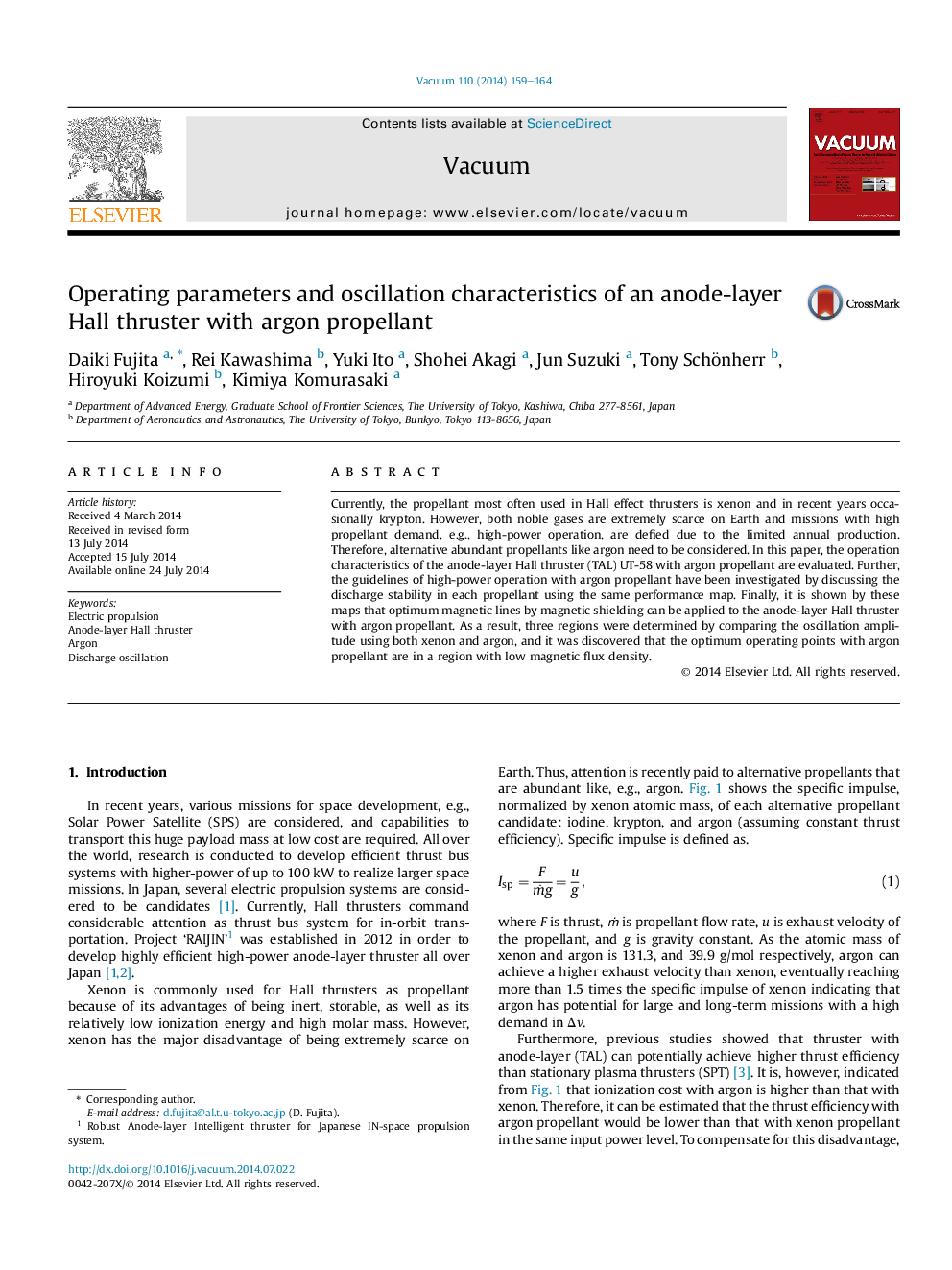| Article ID | Journal | Published Year | Pages | File Type |
|---|---|---|---|---|
| 1689550 | Vacuum | 2014 | 6 Pages |
•A maximum anode efficiency of 23.5% was achieved with UT-58 using argon.•With xenon and argon, the same oscillation characteristics are classified.•The optimum operating points are in the classical diffusion region for argon.•It is feasible to adopt the ideal shape of magnetic lines with argon.
Currently, the propellant most often used in Hall effect thrusters is xenon and in recent years occasionally krypton. However, both noble gases are extremely scarce on Earth and missions with high propellant demand, e.g., high-power operation, are defied due to the limited annual production. Therefore, alternative abundant propellants like argon need to be considered. In this paper, the operation characteristics of the anode-layer Hall thruster (TAL) UT-58 with argon propellant are evaluated. Further, the guidelines of high-power operation with argon propellant have been investigated by discussing the discharge stability in each propellant using the same performance map. Finally, it is shown by these maps that optimum magnetic lines by magnetic shielding can be applied to the anode-layer Hall thruster with argon propellant. As a result, three regions were determined by comparing the oscillation amplitude using both xenon and argon, and it was discovered that the optimum operating points with argon propellant are in a region with low magnetic flux density.
